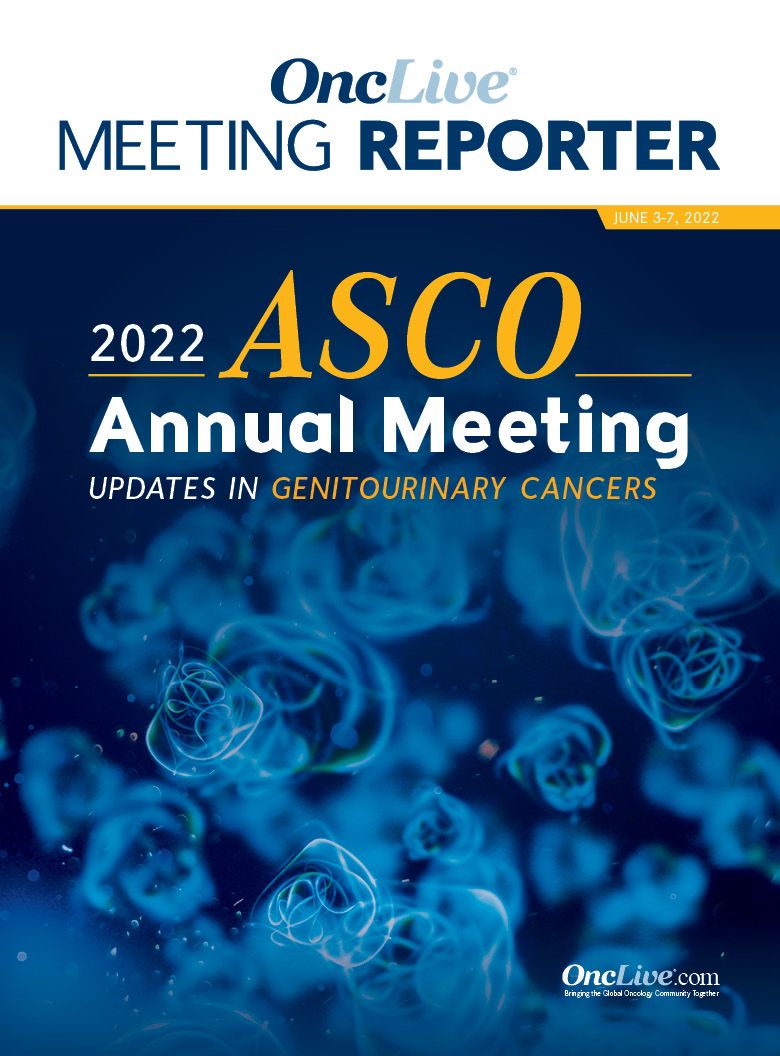Atezolizumab Plus Cabozantinib Elicits Clinical Activity in Advanced Urothelial Cancer
Cabozantinib plus atezolizumab demonstrated promising clinical activity and a suitable safety profile as first-line therapy in patients with cisplatin- eligible and -ineligible, inoperable locally advanced or metastatic urothelial cancer and as second- or later-line therapy in those who received a prior immune checkpoint inhibitor, according to findings from the phase 1b COSMIC-021 trial.
Sumanta K. Pal, MD

Cabozantinib (Cabometyx) plus atezolizumab (Tecentriq) demonstrated promising clinical activity and a suitable safety profile as first-line therapy in patients with cisplatin- eligible and -ineligible, inoperable locally advanced or metastatic urothelial cancer (UC) and as second- or later-line therapy in those who received a prior immune checkpoint inhibitor (ICI), according to findings from the phase 1b COSMIC-021 trial presented at the 2022 ASCO Annual Meeting.
The multicenter, open-label COSMIC-021 trial (NCT03170960) is evaluating the combination of the PD-L1 inhibitor atezolizumab and the multikinase inhibitor cabozantinib in patients with locally advanced or metastatic solid tumors. This analysis included patients with inoperable locally advanced/metastatic UC with transitional cell histology and ECOG performance status (PS) of 0-1.
Among the enrolled patients, those in study cohorts 3 (C3) had no prior systemic therapy and were cisplatin ineligible. Patients in study cohort 4 (C4) were also systemic treatment–naïve but were cisplatin eligible, and study cohort 5 (C5) comprised patients who had received 1 prior immune checkpoint inhibitor (ICI), were VEGFR-TKI–naïve, and had received ≤2 lines of therapy overall.
The results showed that 1 patient in C3, 2 patients in C4, and no patients in C5 had complete responses (CRs). Partial responses (PRs) were reached by 5, 7, and 3 patients in C3, C4, and C5, respectively. The objective response rates (ORRs) were 20%, 30%, and 10%, respectively, and the disease control (CR + PR + stable disease) rates were 80%, 63%, and 61%, respectively.
“Cabozantinib plus atezolizumab demonstrated clinical activity with manageable toxicity in inoperable locally advanced or metastatic urothelial carcinoma as first-line therapy in cisplatin-based chemotherapy eligible or ineligible patients, and in second- or later-line therapy in patients who received prior ICI therapy,” said lead study author Sumanta K. Pal, MD, City of Hope Comprehensive Cancer Center.
Overall, C3 and C4 had 30 patients and C5 had 31 patients. The median ages were 74, 66, and 68 years, respectively; percentage male were 67%, 73%, and 55%, respectively; and ECOG PS 1 were 63%, 57%, and 74%, respectively (all other patients had ECOG PS 0). The lung/liver metastasis rates were 33%/17%, 40%/20%, and 58%/23%, respectively. Additionally, 30%, 43%, and 45% of patients, respectively, had ≥3 tumor sites and 67%, 70%, and 71%, of patients, respectively, had bladder as their primary tumor site.
Patients were treated with cabozantinib at 40 mg orally each day and received atezolizumab at 1200 mg IV every 3 weeks. The primary study end point was ORR per RECIST v1.1 by investigator. The secondary end point was safety, with other key end points comprising duration of response (DOR), progression-free survival (PFS), and overall survival (OS).
The median follow-ups in cohorts 3, 4, and 5, were 27.9 months (range, 15.2-43.8), 19.1 months (range, 7.4-42), and 32.9 (range, 23-41.2). The median DORs were 7.1 months, not yet reached, and 4.1 months, respectively. At least some reduction in tumor size occurred in 74%, 62%, and 63% of patients respectively. The median PFS was 5.6, 7.8, and 3.0 months, respectively, and the median OS was 14.3, 13.5, and 8.2, months, respectively.
Regarding safety, in C3, grade 3/4 adverse events (AEs) were fatigue in 1 patient and amylase increase in 2 patients. Grade 3/4 AEs in C4 were diarrhea (1 patient), AST increase (n = 2), decreased appetite (n = 2), ALT increase (n = 3), and fatigue (n = 1). In C5, grade 3/4 AEs were decreased appetite (n = 1), ALT increase (n = 1), fatigue (n = 2), amylase increase (n = 2), and stomatitis (n = 1). There were no grade 5 treatment-related AEs across the 3 cohorts.
Cabozantinib is currently approved by the FDA for the treatment of patients with advanced RCC and also specifically for use in combination with nivolumab (Opdivo) for the first-line treatment of patients with advanced RCC. Atezolizumab is approved for single-agent use for cisplatin-ineligible and PD-L1–positive or platinum-ineligible locally advanced or metastatic UC.
Reference
Pal SK, Agarwal N, Singh P, et al. Cabozantinib (C) in combination with atezolizumab (A) in urothelial carcinoma (UC): Results from Cohorts 3, 4, 5 of the COSMIC-021 study. J Clin Oncol 40, 2022 (suppl 16; abstr 4504). doi: 10.1200/JCO.2022.40.16_suppl.4504




